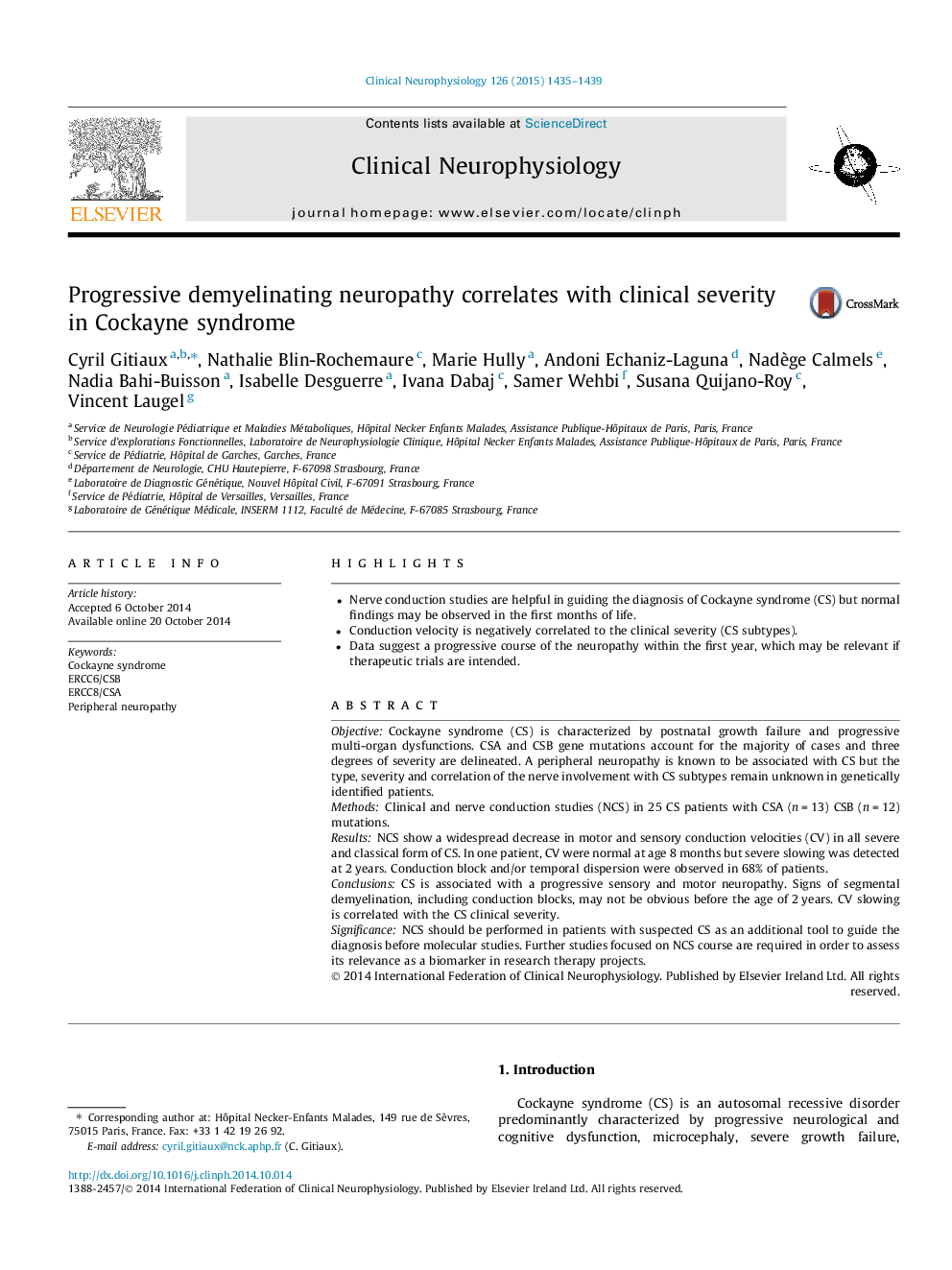| Article ID | Journal | Published Year | Pages | File Type |
|---|---|---|---|---|
| 6007749 | Clinical Neurophysiology | 2015 | 5 Pages |
â¢Nerve conduction studies are helpful in guiding the diagnosis of Cockayne syndrome (CS) but normal findings may be observed in the first months of life.â¢Conduction velocity is negatively correlated to the clinical severity (CS subtypes).â¢Data suggest a progressive course of the neuropathy within the first year, which may be relevant if therapeutic trials are intended.
ObjectiveCockayne syndrome (CS) is characterized by postnatal growth failure and progressive multi-organ dysfunctions. CSA and CSB gene mutations account for the majority of cases and three degrees of severity are delineated. A peripheral neuropathy is known to be associated with CS but the type, severity and correlation of the nerve involvement with CS subtypes remain unknown in genetically identified patients.MethodsClinical and nerve conduction studies (NCS) in 25 CS patients with CSA (n = 13) CSB (n = 12) mutations.ResultsNCS show a widespread decrease in motor and sensory conduction velocities (CV) in all severe and classical form of CS. In one patient, CV were normal at age 8 months but severe slowing was detected at 2 years. Conduction block and/or temporal dispersion were observed in 68% of patients.ConclusionsCS is associated with a progressive sensory and motor neuropathy. Signs of segmental demyelination, including conduction blocks, may not be obvious before the age of 2 years. CV slowing is correlated with the CS clinical severity.SignificanceNCS should be performed in patients with suspected CS as an additional tool to guide the diagnosis before molecular studies. Further studies focused on NCS course are required in order to assess its relevance as a biomarker in research therapy projects.
